In It to Wind It
The Van Duzer Corridor AVA is gaining popularity
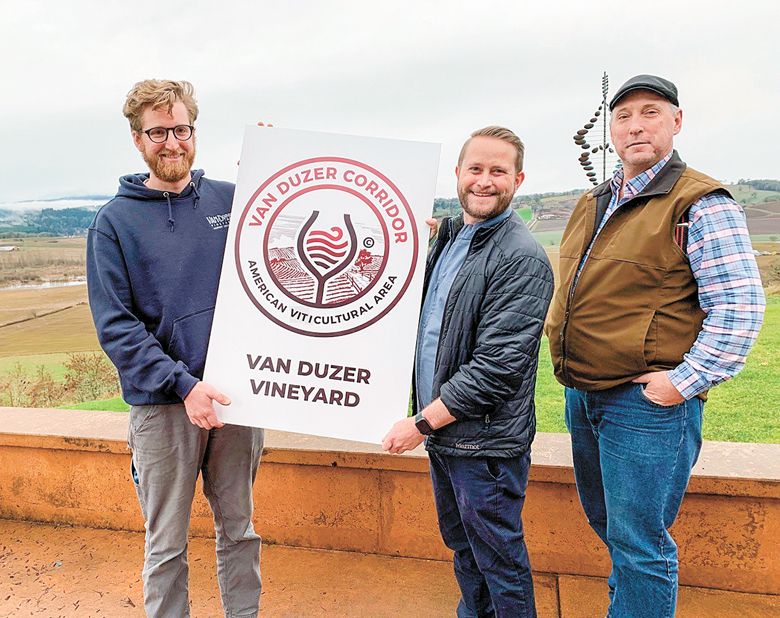
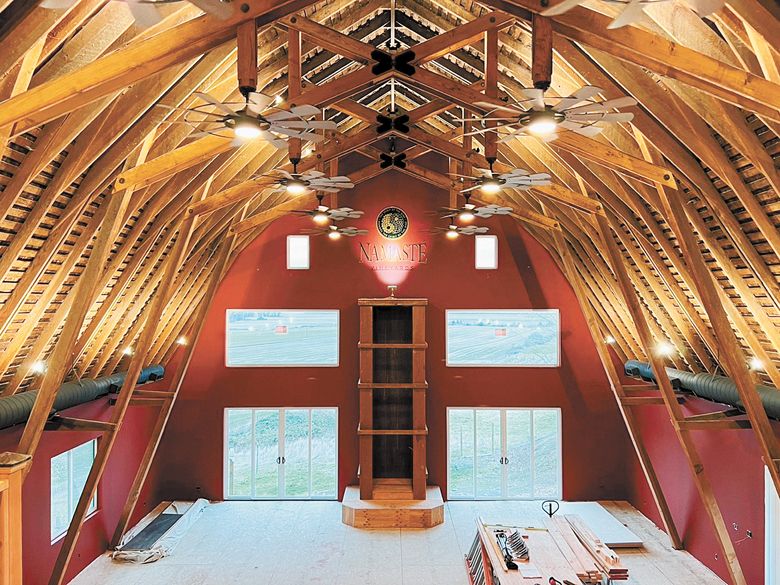
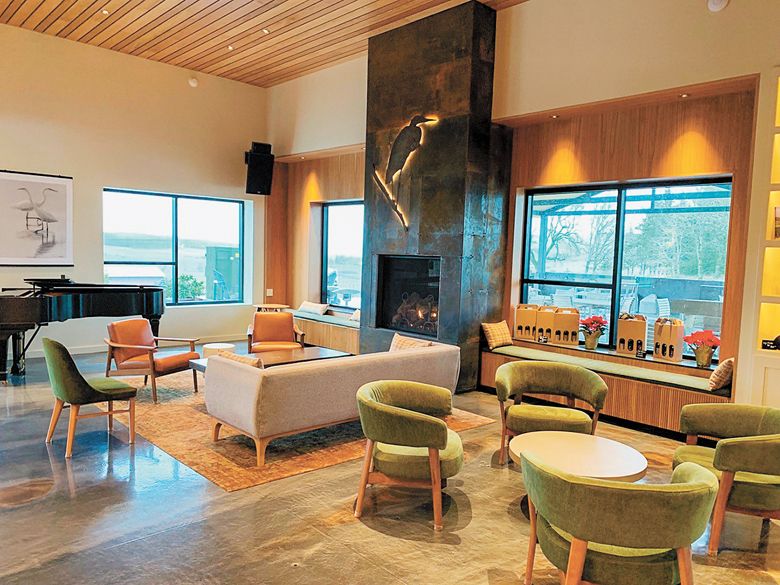
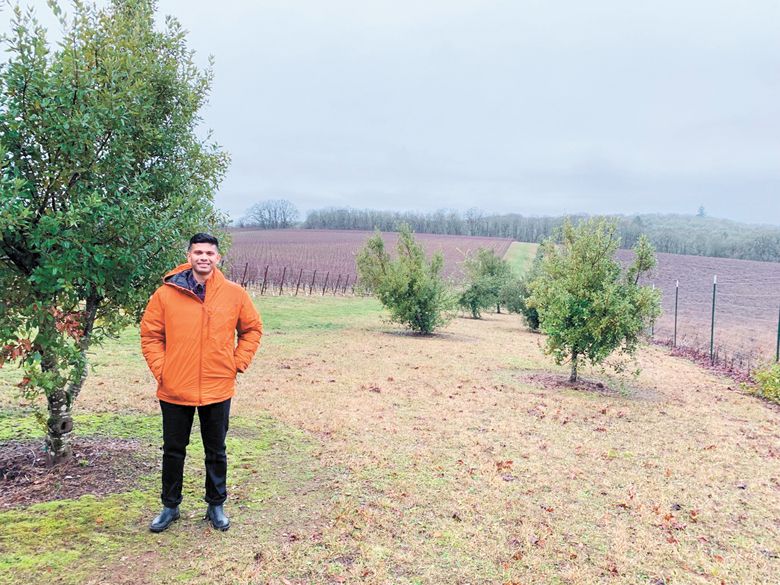
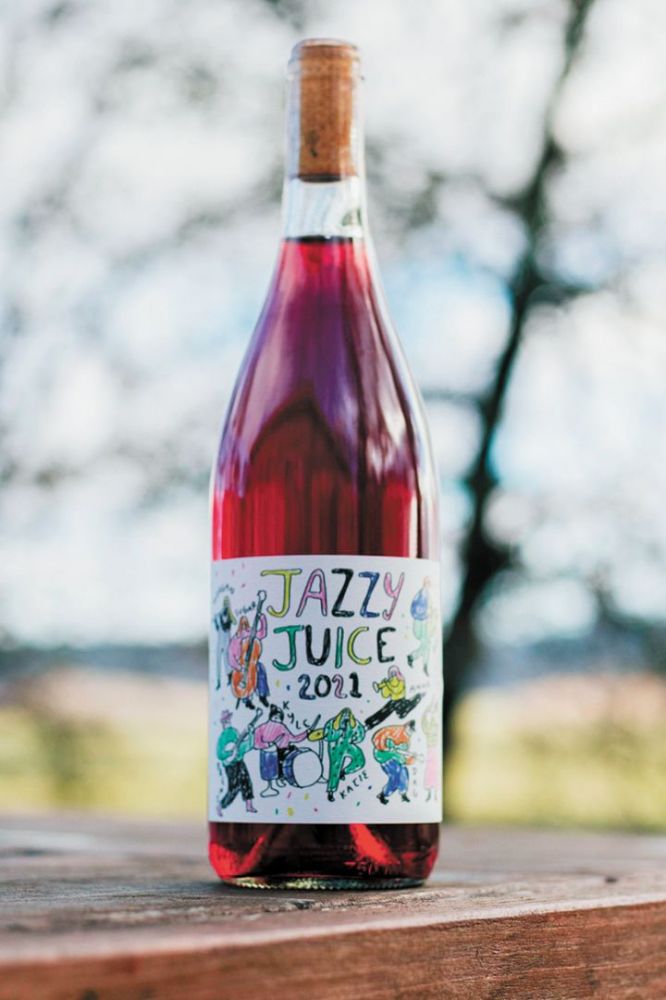
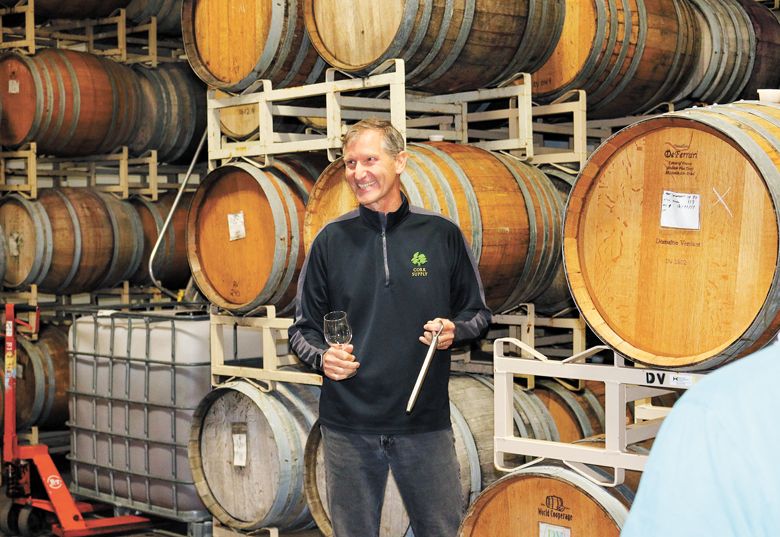
By Patty Mamula
After an arduous 10-year process, the Van Duzer Corridor American Viticultural Area, or AVA, formally became established in January 2019. All required revisions had been submitted to the Alcohol and Tobacco Tax and Trade Bureau, or TTB, in Washington, D.C, immediately before the 2016 presidential election. However, a new president meant sweeping personnel changes at government agencies… and the process stalled yet again until officially designated in early 2019.
According to Dave Masciorini, owner of Namaste Vineyards, “The person most instrumental in getting this AVA established was Jeff Havlin, owner of Havlin Vineyard. He was the driving force.”
Havlin established his 40-acre vineyard in 2007 after purchasing 60 acres south of Perrydale. “We started the AVA in order to be recognized and I do believe that’s helped. People realize that grapes from this area are different.” The Pacific winds funneling through the gap in the Coast Range create grapes with thicker skins, deeper color and more tannins. He predicts the appellation will continue to grow. “There is a lot of land left to plant with grapevines,” he said.
Both Havlin and Jack LaRue at Holmes Gap Vineyard have witnessed an increasing number of wineries using AVA-designated fruit. Bruce Sonnen, vineyard manager at Van Duzer Vineyards and secretary of the Van Duzer Corridor Association, explained how currently, there are around 20 vineyards in the appellation, with nearly 1,000 acres planted, some owned by large producers.
The current president of the organization is Andreas Wetzel, owner of Wetzel Estate. “The pandemic definitely slowed us down. We were just starting our marketing plans when COVID-19 brought things to a screeching halt. The board began monthly meetings again about 10 months ago.”
“We’re in the midst of organizing a public event called Taste the Corridor, taking place on June 3 at Left Coast Estate. Our aim is to increase awareness of our AVA,” said Wetzel. Twenty different wineries will be involved, including smaller wineries who produce wines specifically labeled with Van Duzer Corridor. Tickets can be purchased online at leftcoastwine.com for the tasting event with two sessions—one from 2 – 4 p.m. and another between 4 – 6 p.m.
Proceeds from this event will help fund highway signs for the Van Duzer Corridor.
Individually, many of the six wineries with tasting rooms in the appellation have experienced significant changes. At Namaste Vineyards, Masciorini has been converting his century-old barn into an impressive 7,700-square-foot tasting room with a 2,500-square-foot west-facing deck. “The barn was one of the reasons I bought the property,” he said. Masciorini himself did the majority of work on the lodge-like structure with its exposed old timbers and large fireplace. “I want to open this spring with tastings every day from 11 a.m. to 5 p.m.,” he explained.
He added the AVA designation sparked the whole idea. “This is now a neighborhood. We’re marketing for an area and bringing people to our tasting rooms.”
Although his property measures 200 acres, Masciorini does not intend to expand the 22.8-acre vineyard, the oldest in the AVA. “Our fruit sales are fine. We usually sell half our grapes every year and since the AVA was established, our prices have gone up. We’re not trying to be huge, just profitable and successful.
He envisions the new tasting “barn” as a place to linger and enjoy the views. “We plan to host events, including entertainment and winemaker dinners,” Masciorini said. His wife recently left her corporate position to work full time at Namaste. “The potential for what the tasting room can do for us is far better,” he said. “The AVA designation has provided us all a solid platform that we can spring from to showcase this area.
The major change at Johan Vineyards is new ownership. Morgan Beck, the winemaker and general manager, said that former owner Dag Sundby had been looking to sell for five years. “He needed a substantial investment,” said Beck, “but he was picky.”
Katherine “Mini” Banks, whose family was involved with wineries in California, in 2021, purchased both Johan and Cowhorn Vineyard in Jacksonville. She was attracted to their certified biodynamic farming practices. Johan Vineyards is the larger of the two.
The 175-acre property, with 87 acres planted with grapes, includes unique varieties: Ribolla Gialla (an Italian white) and Grüner Veltliner (an Austrian white). It was also the site of Sundby’s family home, located in the middle of the property with a northwest view of the Van Duzer Corridor. The house, being renovated into a new tasting room, opens this fall. A new production facility, a short walk from the tasting room, is also planned. A local firm has been hired to build it. The schematic design is nearly finished and the facility has a projected date for completion in 2025 or 2026.
Johan produced 6,000 cases in both 2021 and 2022, the maximum they can make in the existing space. All the wines were from estate-grown fruit. “We sell about 60 percent of our grapes and keep the rest. With more space in the new facility, we can flip that percentage,” Beck said.
“We have been able to increase the prices of our grapes over the past few years and sell all the fruit. No one has blinked an eye at the higher cost. With lower Pinot Noir yields in 2019, 2020 and 2021, people are dedicated to quality and selective about where they buy their fruit. People who work with us know the impact of the Van Duzer Corridor winds and biodynamic farming on the grapes,” said Beck.
Pinot Noir, Chardonnay and Blaufränkisch comprise Johan’s core wines. In 2018, Beck added “Jazzy Juice,” a blend of Pinot Noir, Pinot Gris and Kerner. The label is a whimsical illustration of the entire crew for that year, all playing in a jazz band. The new owner felt Beck’s continuity at Johan was part of the appeal of the property.
Andante Vineyard, the newest winery in the Van Duzer AVA, was established in 2010 by Karen Saul and husband Joe Allan. In 2018, they built a large facility housing the winery on one side and equipment on the other. Tastings were inside the production facility.
Since then, the farm equipment has been moved, creating space for a contemporary tasting room with a fireplace, grand piano, commercial kitchen, comfortable chairs and a patio. It opened last May. Currently, they are completing a large, covered patio to the east of the tasting room, with heaters, a pizza oven and an outdoor kitchen.
“We brought most of our farming in-house. Andante is LIVE-certified and now using organic farming methods,” said Saul.
Erin and Laurent Percheron are the winemakers. Erin acknowledged that Sauvignon Blanc is considered their flagship wine, but they have many new additions, including a bubbly Gamay Rosé and Aligoté. They make both an estate red and white Pinot Noir. Saul said, “When people think of Andante, they recognize we have a diverse wine offering.”
Jana Loney, the director of hospitality, explained, “Hospitality is a huge priority for us. Our servers are all very experienced and we’re excited about our food offerings and chef. His pairings change with the seasons.”
Full-time chef Caleb Warner, from Cozy Taberna in Salem, specializes in food and wine pairings. Unique items include snow crab cakes and cacio e pepe à la plantain (spaghetti with a plantain cream sauce, kale, cranberries, hazelnuts and parmesan), all with suggested wine pairings.
Andante also hosts wine pairing dinners the first Thursday of every month. Allan, now retired from his medical practice, is an accomplished pianist with many musically talented connections. Naturally, ticketed musical events occur frequently. “Music is an important part of our experience,” shared Saul.
Loney said, “We’re garnering excitement and interest because of the AVA status. We’re starting to get customers specifically coming to visit this appellation.” Allan agreed. “We want people to come here and have a great experience,” he said.
Co-winemaker Erin Percheron explained how the distinctive taste of wines from Andante originates from the thick-skinned grapes that develop because of the constant afternoon winds from the Van Duzer Corridor and the unique marine sedimentary soils. In the early days, they sold some of their fruit, but not any longer. Saul shared, “Everything here is limited production. Erin and Laurent make beautiful wines in small quantities. We made 2839 cases last year, with one custom crush client. We will continue to produce under 3000 cases for awhile.”
Van Duzer Vineyards, after Namaste, claims some of the oldest vines planted in the region, including Chardonnay and Pinot Noir planted in 1983. The newer, west-facing blocks are the most directly exposed to the Van Duzer winds.
Winemaker Eric Misiewicz said, “This property is very interesting with a big difference between fruit grown facing different directions. There is so much distinctiveness and variety in this one vineyard.” With a total of 83 acres of grapevines and 40 separate blocks, it’s a microclimate paradise.
The property, bordering the Baskett Slough National Wildlife Refuge, contains enviable ecological diversity. Van Duzer was one of the first in the area to become LIVE-certified in 2001. Bruce Sonnen explained how the lands are managed, like most of the neighboring vineyards, to preserve the natural oak savanna. “We’ve also been working with the U.S. Fish and Wildlife Service to restore the habitat of the Fender’s blue butterfly, thought extinct until one was spotted in 1989. The first Fender’s Blue was discovered on this property in 2015. They lay eggs only on the Kincaid’s lupine, a native wildflower found on our west slopes.”
Over the past years, Van Duzer Vineyards has experienced incremental changes. The increase in foot traffic and overall awareness of the AVA itself, according to Brandon Allen, sales and marketing manager, sparks conversations about the microclimates and unique diversity.
The tasting room, now expanded with a fully-enclosed, heated outdoor area that can be opened to the patio on sunny summer days. “We also added a culinary program offering charcuterie and cheese boards and seasonal paninis,” said Allen. “The tasting room faces southwest with a view of the Coast Range and some of the best sunsets around.”
Pinot Noir is Van Duzer Vineyards’ main wine, with Misiewicz adding a few new selections, including a Radiance Pinot Gris, that sells out fast. “The first vintage sold out in seven days,” he said. “The grapes for the wine soak with the skins on, giving it a color similar to rosé with bright peach aromatics.” Misiewicz also introduced a carbonic maceration Pinot Noir, where fermentation occurs in the grape clusters themselves.
“Many people are sourcing fruit from here and producing AVA designates. Here at Van Duzer Vineyards, we sell about 15 percent of our fruit; it’s easier to sell now because of the AVA,” explains Sonnen.
The largest winery in the area, and one of the larger in Oregon, is Left Coast Estate. Shardul Ghogale, the national sales director, shared that five additional acres were recently planted, bringing the total to 150 acres in planted vines across the 500-acre property. The majority of their production is Pinot Noir, with Cali’s Cuvée Pinot Noir, named after the owner’s daughter, comprising nearly half the total. This year, it represented 9,200 cases out of Left Coast’s total annual production of 22,000. Usually, they produce between 6,000 to 8,000 cases of white Pinot Noir too. But, in 2020, they pivoted, making 14,000 cases of white.
“We did not make any red wines that year because of the smoke from the wildfires,” explained Ghogale.
“We shipped a small order of 2019 vintage white Pinot Noir to ALDI Grocery in the United Kingdom. Today, our white Pinot Noir is available in every ALDI store in the UK and Ireland, selling for £14.99. The reviews have been incredible. So much so that we’re now looking for a full-time importer.”
Ghogale mentioned that distributors prefer Pinots from specific regions within the Willamette Valley because they want to be able to differentiate. “Our wines are unique,” he said.
Their newest release is Shindig Pinot Noir, made especially for Cali’s wedding last year. Produced using carbonic maceration, this wine will be released only in specific U.S. markets.
By 2030, Left Coast expects to have 200 acres of planted vines. “Currently, we’re happy at 23,000 cases. Our winery maximum capacity is 39,000, so I think 30,000 cases is an ideal number for the future,” he said.
Wetzel at Wetzel Estate follows the grape market closely. He noticed that the price for Van Duzer Corridor AVA fruit and wine has gone up. “We’ve taken the initiative to invest further in our vineyard. In the last two years, we added another couple blocks of Pinot Noir to bring our total up to 40 acres.” That doesn’t mean they are looking to sell fruit. “As a producer of grapes, we’re in a better situation to make and sell our own wine. By growing our own fruit, we have more control over our margins and can absorb increases in costs.”
Last year produced an excellent vintage in terms of quantity and quality. “We had a late spring frost, but ended up having an increase in production. We have been at capacity at our facility with our own production and custom work at close to 100,000 gallons annually,” explained Wetzel.
Holmes Gap Vineyard and Havlin Vineyard have yet to establish tasting rooms but both are producing smaller quantities of quality AVA wines from their estate grown grapes.
The Van Duzer Corridor AVA has increased awareness of what makes this grape growing region so unique. The geologic and environmental factors that influence the quality of the grapes will, over time, only increase their desirability and price. This will be especially important as the cooling effects of the winds through the Corridor lessen the impacts of climate change.
New tasting rooms, events, marketing and expanded facilities will attract visitors to the area, creating interest that continues to grow. So, too, will the number of vineyards and maybe even wineries since available lands are still plentiful.










